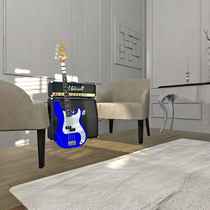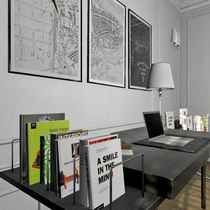This simulator gives you the opportunity to learn any language in the most interesting way today. Not only that you learn faster and more efficiently, you get to experience the foreign language.
When we first realized the potential of VR in education we actually had no idea how deeply it can be integrated in the education system and how it can change the way of learning from scratch. In a partnership with HTC and a local private school we have analysed the existing study programme and brainstormed on the ideas for visual VR content that could be added. It turned out that there are no limits in what can be done to help students achieve better results. To get a better understanding, imagine a history lesson, where students would not only be told of how Adolf Hitler declared war against United States on December 11, 1941 by giving the speech in Krolloper in front of thousands of people, but actually stand next to him, look around even move like in real life witnessing the speech interruptions of cheering crowd. After feeling what August Landmesser felt being the only man standing in the crowd who refused to give Nazi salute, unique memories can be created and associated with the discussed events, lessons’ topics. Same goes with every other subject where custom applications can be created like interactive experiments for chemistry and physics, spatial and logical thinking tasks provided for maths, structures of planets explained in geography or even every capital visited like in real life when learning the capitals of the countries. This is not 360 degree videos that we are talking about and most of all, not standing-only experiences. Those steps are past as we can focus on actual engagement, realistic interaction and full participation.
It is worth mentioning that even having one headset in the classroom can provide vast positive results as all what is seen by one person in Virtual Reality can also be seen via live feed on the bigger screen, where the same old projectors will come in handy.
To develop this particular simulator, we have recreated a casual 3D environment of a regular apartment with three accessible rooms. Those were made as three levels of difficulty with first one being introduction to simple objects while interacting with them, second one introducing to advanced material and third one giving tasks in the new language. This is not 360 degree video or something seen on screen – virtual reality enables students to actually interact.
With the use of virtual reality applications teachers are able to achieve much better results than trying to visualize the study material in any other way. Accurate and interactive visualizations are the key element in providing 90 % of study material absorption. That is why we constantly update the visuals of our simulators in order to maintain the full focus of excitement. Moreover, new scenarios are being created to enable various pre-made applications for schools who would like to have not custom but more general overview of a particular subject and use it in the class. As we are creating simulators to train employees in real companies, we are working on the simplified versions of those applications to form a platform where students would be able to try a preferred job position. With the opportunities that VR brings, it is possible to get the student into any real job position he would like to try.















